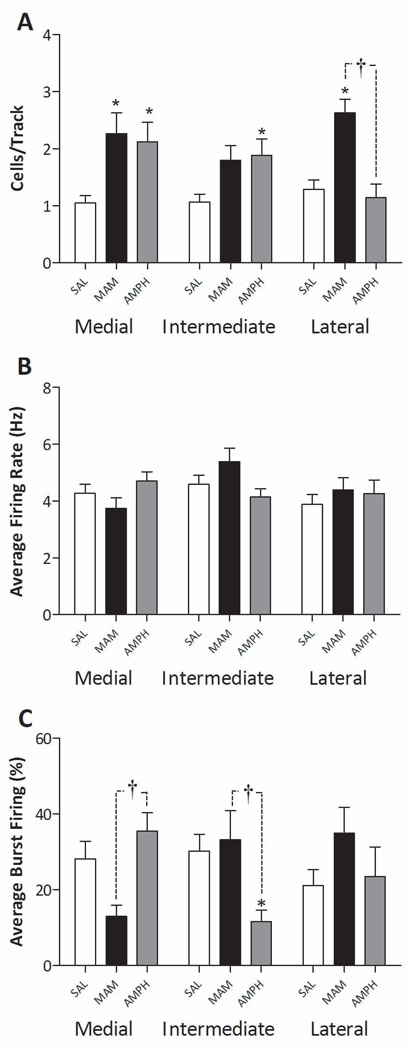Figure 2.
Divergent activation of ventromedial and ventrolateral dopamine systems following gestational MAM or repeated amphetamine administration. Three parameters of activity were recorded: population activity (number of spontaneously firing dopamine neurons per electrode track (A)), average firing rate (B), and average percent spikes fired in bursts (C). MAM-treated rats (GD17 - 20mg/kg i.p.) display a significantly greater population activity throughout both medial and lateral regions of the VTA, with no significant differences in burst firing or average firing rate. In contrast, the repeated administration of amphetamine (1.5mg/kg i.p. BID – 5 days) resulted in a significantly greater population activity in medial VTA regions, with no significant differences observed throughout the lateral VTA. * represents statistically significant difference from control (saline administration) wheras † represents statistically significant difference between MAM and amphetamine treated rats (p<0.05 2 way ANOVA: Bonferroni post hoc: n = 5–11 rats/group; error bars represent SEM).

